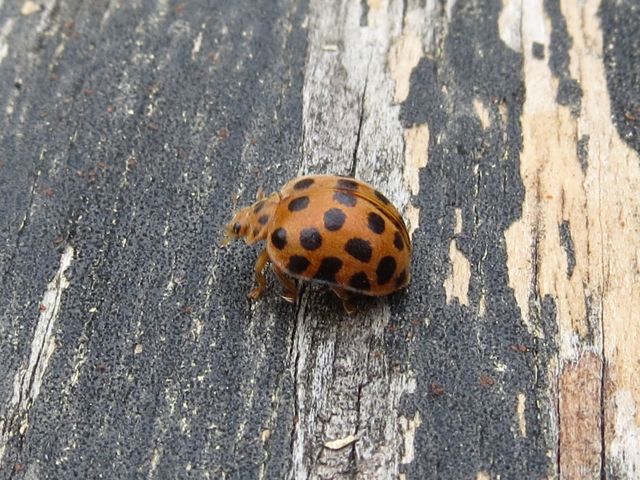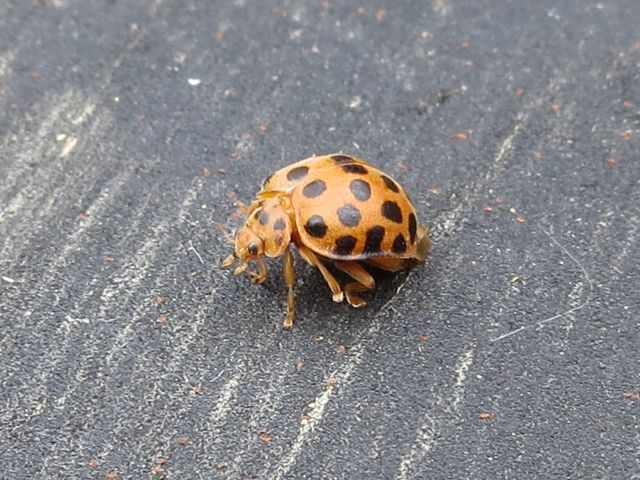�
�

©Ellie Shuetrim and Geoff Shuetrim: Side view of the 26-spotted Potato Ladybird showing the 13 spots on a wingscale
�
���
Epilachna vigintisexpunctata
26-spotted Potato Ladybird

©Ellie Shuetrim and Geoff Shuetrim: Side view of the 26-spotted Potato Ladybird showing the 13 spots on a wingscale
Kingdom
Animalia
Phylum
Arthropoda
Class
Insecta
Order
Coleoptera
Family
Coccinellidae
Genus
Epilachna
Species
Epilachna vigintisexpunctata
Colours
Distinguishing features
Their eggs are laid in clusters and are yellow. Their larvae are also yellow and hairy.
Size
- Size data has not been obtained.
Wingspan
- Wingspan data is not yet available.
Synonyms
Diet
In warm, dry weather 26-spotted ladybirds can attack vegetable plants in your garden. The plants are mainly vulnerable during dry weather because they , as soil dries out, vegetable plants are unable to absorb the nutrients they need to produce the compounds that deter pests. This allows these ladybirds to feed on plant leaves until only a network of veins remain. Larvae mainly eat the underside of leaves while adults eat the upper sides of leaves. Preferred plants include squash, melons, beans, potatoes and tomatoes. (Aussie Organic Gardening)
Web resources
References
- Ślipiński, A. (2007). Australian Ladybird Beetles (Coleoptera: Coccinellidae): Their biology and classification 288 pp., 83 pl. Australian Biological Resources Study. Australian Ladybird Beetles (Coleoptera: Coccinellidae): Their biology and classification↱
